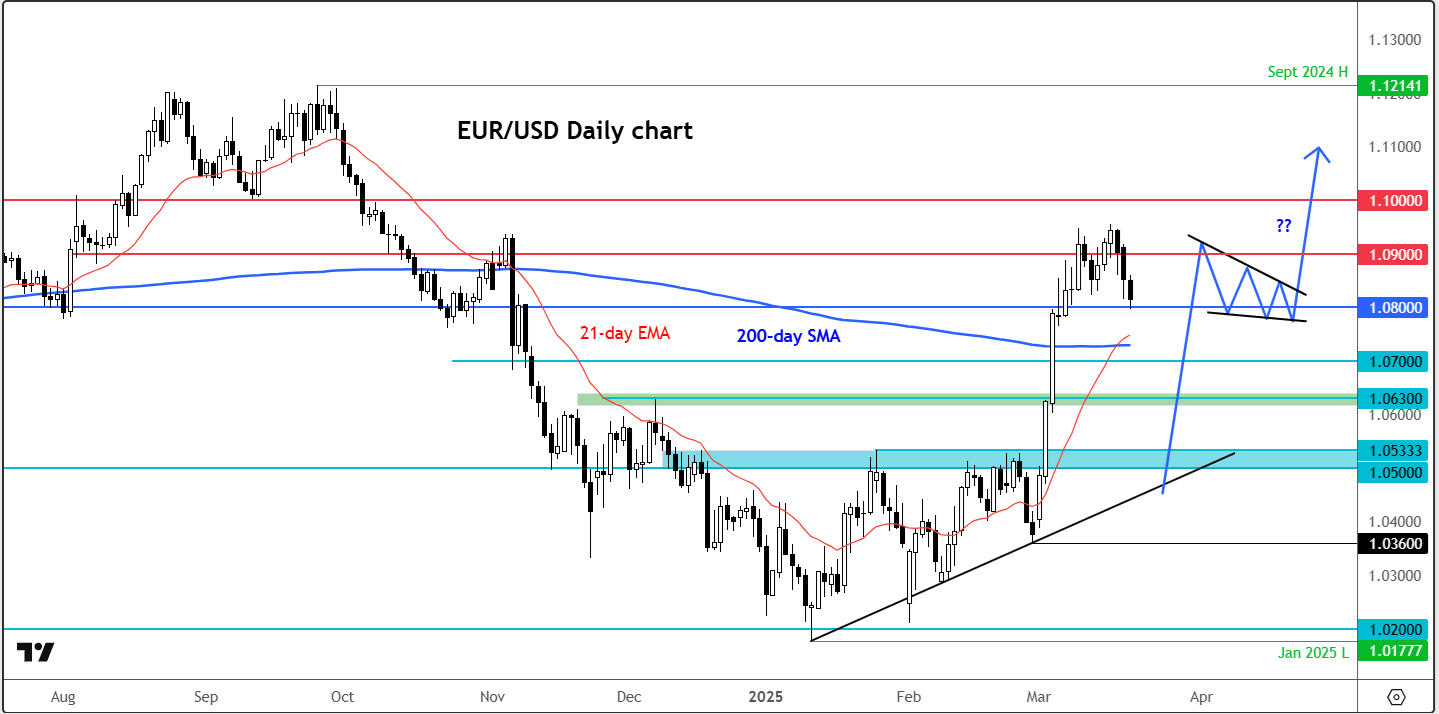
Germany’s Bundesrat gave the green light on Friday to a sweeping spending package designed to kickstart growth in Europe’s largest economy and bolster its military capabilities, marking a historic shift in policy. After years of sticking rigidly to fiscal orthodoxy, Berlin is now opening the taps. The newly approved legislation paves the way for a €500 billion fund earmarked for infrastructure investment while also loosening borrowing restrictions to facilitate a sharp rise in defence spending. This is something that is expected to boost GDP and potentially keep inflation elevated, providing a positive backdrop to the medium term EUR/USD forecast. Meanwhile, there wasn’t much in the way of major European data last week, with German ZEW Economic Sentiment improving more than expected (51.6 vs. 48.1) and Final CPI being revised lower (2.3% vs. 2.4% expected). In the week ahead, key data highlights include the global PMI data on Monday, followed by US core PCE price index on Friday.
US dollar consolidates after recent drop
Friday proved somewhat uneventful in the FX space, with the dollar largely treading water after a week of mixed economic data and a Fed meeting that tilted dovish. Fed Chair Jerome Powell worked to steady the ship, downplaying economic risks and brushing aside concerns over the inflationary effects of tariffs. He maintained that the economy remains resilient and that long-term inflation expectations are firmly anchored, despite the more troubling signals from the University of Michigan’s latest survey. Powell even suggested that the inflation stemming from Trump’s tariffs could well turn out to be transitory. Let’s see what he will think after the central bank’s favourite inflation measure is released on Friday.
Week ahead: Global PMIs could move the EUR/USD
We’re set to receive the latest round of global Purchasing Managers’ Indices on Monday, and it’s the European data that will likely be in the spotlight, putting the EUR/USD forecast in spotlight. The question is whether Trump’s trade war is already starting to dent business activity worldwide. In the Eurozone, manufacturing PMIs have been inching higher, but they still languish below the crucial 50.0 mark that separates contraction from growth. The recent upsurge in key indices such as the DAX suggests investors are starting to price in a more optimistic scenario, with hopes that Germany’s hefty fiscal stimulus will soon filter through to the broader economy. Any positive readings could help fuel a rally towards the 1.10 handle, while weaker data may not play a significant role.
US Core PCE price index is week’s key data highlight
Both the CPI and RPI readings earlier this month undershot expectations, yet the University of Michigan’s survey painted a different picture, with inflation expectations climbing at a worrying pace. Now, however, attention shifts to the Fed’s preferred inflation gauge – the core PCE Price Index, due on Friday. Fed Chair Powell has attempted to calm nerves last week, insisting that long-term inflation expectations remain anchored and that tariff-driven price pressures could prove transitory. The softer CPI data was largely concentrated within services, meaning it may not necessarily translate into a similarly subdued core PCE print. Another +0.3% month-on-month increase in Core PCE index is what the markets are bracing for.
Technical EUR/USD forecast: Key levels to watch

Source: TradingView.com
The EUR/USD lost some momentum last week, but it could be a pause before it continues higher towards 1.10 handle in the week ahead. Let’s see if the bulls will be able to continue defending the 1.08 handle, or whether we will dip a little further lower. The next support level down is at 1.0730, marking the 200-day average. Further support levels to watch include 1.0700 and then 1.0630. Resistance comes in around 1.0900, 1.0950 and then 1.1000.
-- Written by Fawad Razaqzada, Market Analyst
Follow Fawad on Twitter @Trader_F_R






